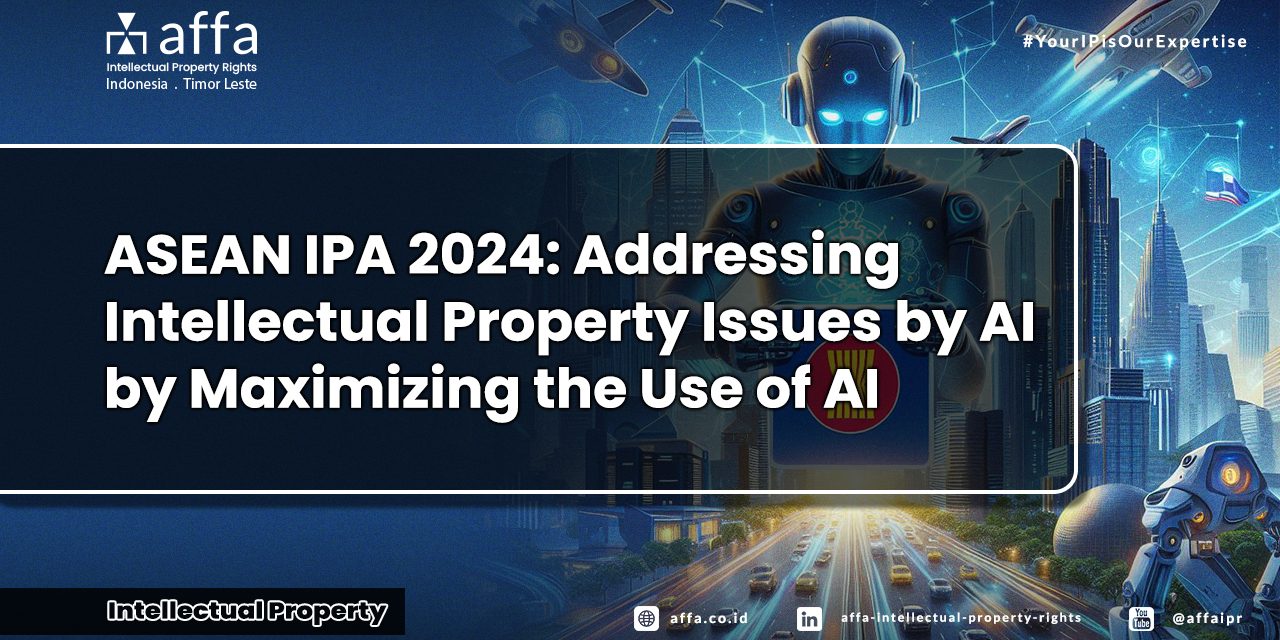This article is a continuation of the previous article, which discussed the Challenges of Intellectual Property Protection in the Digital Era for countries in Southeast Asia, as presented at the 2024 ASEAN Intellectual Property Association (IPA) Annual General Meeting & Conference, which took place on March 1-2 ago in Jakarta, Indonesia. As previously explained, the Digital Economy presents challenges in protecting Intellectual Property (IP) in the ASEAN region. However, what has not been revealed in the article is the contribution of Artificial Intelligence (AI) to the growth of the digital economy and its impact on IP law enforcement, even though AI’s contribution to regional GDP in 2030 will reach USD 1 trillion.
The growth of the Digital Economy in the ASEAN region cannot be denied, generated by many start-up companies in various fields, such as Techinasia in the media sector, Grab in the transportation sector, and Traveloka in the tourism sector. Of the USD 100 billion growth in the region in 2023, around 13% will be supported by investment in the AI sectors, with 6 (six) main uses as follows:
- Computer Vision
This market focuses on technology that helps computers make sense of digital images and videos. - Machine Learning
Algorithms teach computer systems to learn from data. - Natural Language Processing
Deals with technology enabling computers to understand and generate human language. - AI Robotics
Combining AI, machine learning, and engineering, to create intelligent machines capable of independent tasks. - Autonomous & Sensor Technology
Machines and systems equipped with sensors and AI operate independently, responding to changes in their environment. - Generative AI
Involving the creation of models that produce new content like images and text, often indistinguishable from human-created content.
With those various implementations, IP stakeholders must anticipate AI developments because they impact administration, practice, protection, and law enforcement. In particular, AI will confuse IP owners, consultants, and government officials if the laws on Copyright, Trade Secrets, Industrial Designs, Patents, and Trademarks are not changed.
Because AI, on the one hand, is very promising but also dangerous, depending on who uses it. In the UK and the US, there have been more than 10 cases of lawsuits against Generative AI-based companies. For example, OpenAI, the company that created ChatGPT, was deemed to have violated Copyright because it used many well-known works and media news as learning material for its AI system without permission.
Utilization of AI for IP Violations
If ChatGPT argues that the use of the work is for learning and can be settled with royalty payments, in practice, many other uses of AI can be categorized as legal violations, namely:
- Fabricate, forge, falsify images, certificates, documents, and create deepfakes videos;
- Create/manufacture realistic counterfeit labels and packaging;
- Clean up language, grammar, misspellings, and awkward phrasing on labels, packaging, advertising, websites; spam/phishing emails, which were often dead giveaways of counterfeit goods made in a foreign country; and
- Allow hackers to break into networks through emails that trick recipients into sharing personal info or accessing them illegally.
Benefits of AI in the IP Landscape
However, AI is of great benefit to IP law enforcement. Starting from maximizing IP Consultants’ work and the border enforcement process to law enforcement officers.
Maximizing the Work of IP Consultants:
- Conducting searches and analysis of prior art and IP registration databases more efficiently and accurately;
- Streamlining contract analysis by extracting and categorizing relevant information, saving time and allowing attorneys to focus on negotiating and drafting contracts;
- Enabling faster identification of potential conflicts, enhancing due diligence, assisting in determining protection or infringement issues; and application drafting to improve productivity/reduce costs.
Benefits of AI for IP Law Enforcement:
- Monitor online platforms, websites, and social media for unauthorized use of IP, enabling proactive enforcement by owners;
- Identify instances of infringement on digital platforms by comparing content or marks against databases of brands, designs, or works; and
- Assist IP research and litigation by analyzing legal texts, court decisions and precedents, case strategy development, and outcome predictions from historical data.
- AI is being integrated into the criminal justice process, from crime prevention to evidence analysis.
- It can assist courts in making sentencing decisions and assess the likelihood of future criminal behavior, thereby informing parole, probation, or release decisions.
- It can enhance efficiency, accuracy and fairness, but bias, transparency, and ethics concerns have been raised and will continue to be raised as AI technologies become more pervasive and invasive.
Benefits of AI for Border Enforcement:
- Drawing insights and patterns from customs databases, market reports, trade statistics, and IP owner-provided product identification materials;
- Automatically identifying objects in streaming video and imagery; and
- Providing real-time alerts to operators when an anomaly is detected, enhances the ability to stop illicit and illegal goods from entering the country.
In the end, new regulations are needed to adapt to AI developments. These regulations should start with rules related to ownership of rights involving AI, rules governing coordination between stakeholders, competition, and privacy, and rules governing resolution and legal enforcement of any disputes that may occur. Only with clear rules can conducive growth be created before the next technological wave finally emerges.
If you require further information regarding the impact of AI on Intellectual Property, please do not hesitate to contact us via email at [email protected].







